PDF chapter test TRY NOW
DNA is similar to a genetic fingerprint; no two people on the planet have the same DNA. Even identical twins' DNA is not completely similar (due to a phenomenon called epigenetics). Through reproduction, DNA is passed down from generation to generation.
Scientists could not figure out the shape and structure of DNA until 1953 when Dr James Watson had a dream that inspired him to think about the double helix, the dream was of two interwoven serpents with heads at opposing ends, but other reports claim the dream was of a double-sided stairway.
Structure of DNA
A hereditary material is DNA, which includes genetic information. It is a chromosome's most significant component. The double-helix model of James Watson and Francis Crick is the most widely recognised model of DNA. They proposed the three-dimensional model of DNA based on Rosalind Franklin and Maurice Wilkins'DNA X-ray diffraction experiments.
Important!
Watson, Crick, and Wilkins were awarded the Nobel Prize for Medicine in 1962 for their discoveries on the molecular structure of nucleic acids.
Chemical Composition of DNA molecule
DNA is a large molecule with several nucleotides in it. Thus, it is also known as a polynucleotide.
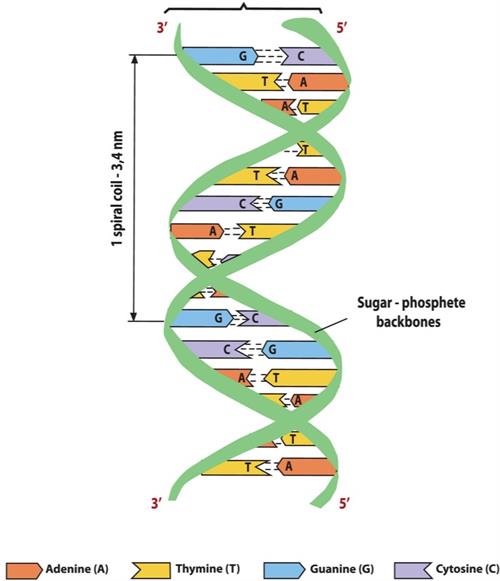
Structure of DNA
Each nucleotide is made up of three parts.
- Deoxyribose sugar - It is a sugar molecule.
- A nitrogenous base - Purines and pyrimidines
- A phosphate group - Phosphoric acid H_3PO_4
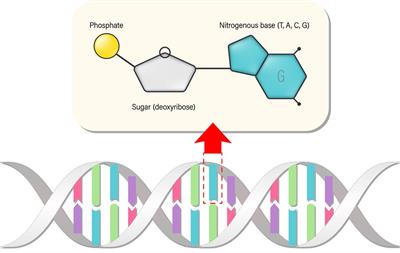
DNA nucleotide
DNA has nitrogenous bases, which are of two types;
- Purines - Adenine and Guanine
- Pyrimidines - Cytosine and Thymine

Nucleoside and Nucleotide
Important!
Nitrogen\ base + Sugar = Nucleoside
Phosphate + Nucleoside = Nucleotide
Phosphate + Nucleoside = Nucleotide
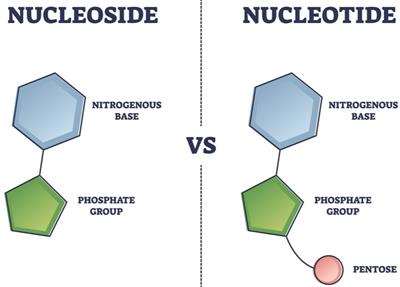
Nucleoside and nucleotide
Ribose or deoxyribose are the sugars found in the nucleotide. Purines and pyrimidines are nitrogenous bases. The phosphate is found in the form of phosphoric acid. A phosphate group and a nucleoside are joined to make a nucleotide. In contrast, a nucleoside is made up of a sugar molecule and an organic nitrogenous base. Hence, the nucleotides are formed based on the purines or pyrimidines, sugar and phosphate.
Watson and Crick model of DNA
- Two polynucleotide chains make up the DNA molecule.
- These chains form a double helix structure with two strands that run in anti-parallel directions.
- The sugar-phosphate units that make up the backbone of DNA are connected to nitrogenous bases in the centre.
- The pairing of nitrogenous bases is quite specific. It always occurs between purine and pyrimidine, which are joined together by hydrogen bonds.
1. Thymine (T) is linked to Adenine (A) via two hydrogen bonds (A = T).
2. Guanine (G) is linked to Cytosine (C) by three hydrogen bonds (C ≡ G).
This phenomenon is termed complementary base pairing.
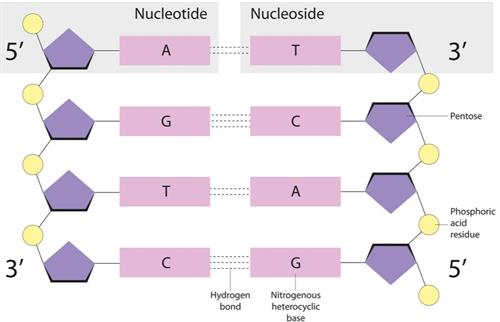
The formation of the nucleotide
RNA replaces thymine (T) with uracil, a distinct pyrimidine nucleotide (U). In a double-helix, complementary base pairing allows one strand to serve as a template for constructing the other.
- The DNA molecule is stable due to hydrogen bonding between the nitrogenous bases.
- The length of each turn of the double helix is 34\ A° (3.4\ nm). The width of DNA is 20\ A°. In a complete rotation, there are ten base pairs.
- Phosphodiester bonds connect the nucleotides in a helix together.
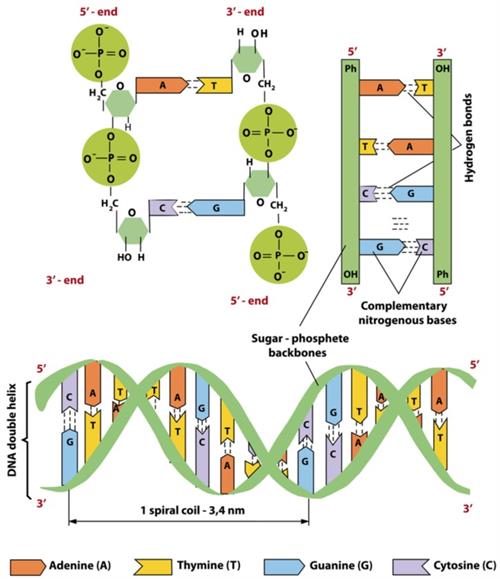
The structure of DNA
Important!
Do you know!
Chargaff rule of DNA base pairing: According to Erwin Chargaff's rule of DNA base pairing,
1. The amount of adenine in DNA is always equal to the proportion of thymine.
2. The proportions of guanine and cytosine are always equal.
